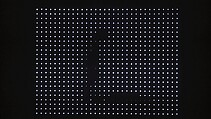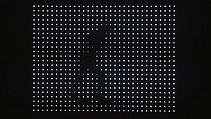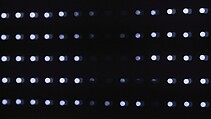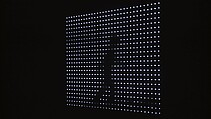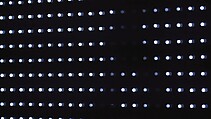Motion and Rest #2
Jim Campbell American
Not on view
One of the pioneering figures in new media, Campbell examines the ways in which digital technologies that permeate every aspect of our lives transform the nature of perception and subjective experience. His art combines an expert understanding of these technologies from an education in mathematics and electrical engineering at Massachusetts Institute of Technology (MIT) in the late 1970s with a keen historical awareness of their relationship to earlier visual media, particularly photography and film.
For his series Motion and Rest, the artist took as inspiration the stop-motion photographs of Eadweard Muybridge from the 1880s-works that simultaneously furthered scientific understanding of the human body and, by extension, prepared it for the rote techniques of assembly-line production developed at the same moment by industrial engineer Frederick Taylor. Campbell's updated versions are black, wall-mounted panels composed of hundreds of tiny white lights (actually light-emitting-diodes or LEDs) through which is fed looped footage of figures walking in profile, and whose outlines are composed of the negative space left by the undulating ripples of white light that define their contours. This application of a black-and-white dot matrix relates them to yet another development of the 1880s-the halftone method of photographic reproduction in which many of Muybridge's motion studies first appeared. As opposed to Muybridge's well-built, agile human specimens, however, Campbell's subjects hobble and lurch before stopping to rest and catch their breath-the result of various disabilities such as limps or severe arthritis-performing an implicit, ironic rebuke to blind faith in technology's mythic link to progress and human fulfillment.
Due to rights restrictions, this image cannot be enlarged, viewed at full screen, or downloaded.
This artwork is meant to be viewed from right to left. Scroll left to view more.


